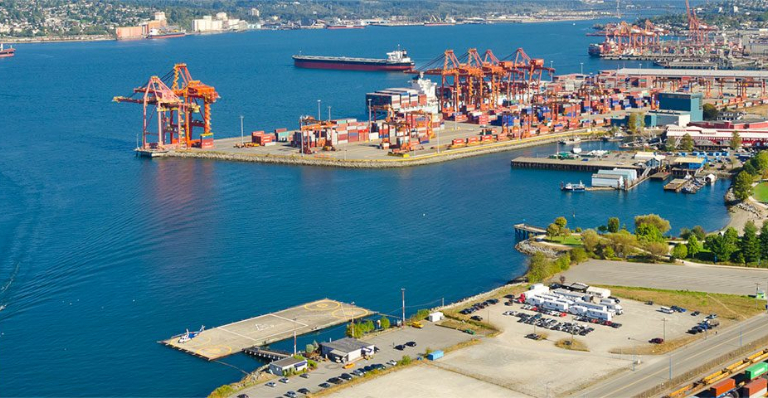With uncertainty in the U.S. and other markets, and the emerging threat of protectionism, the Canada-European Union Comprehensive Economic and Trade Agreement (CETA) will create opportunities for growth. We asked Daniel Benatuil, EDC’s Economist for Europe, to talk about the pros and cons of the new CETA agreement.
CETA is expected to support Canada’s economy and trade engine, and the timing is good. Protectionism seems to be getting a bit of a foothold around the world. We see that in the macro trends and some politicians are willing to take advantage of that. Some say Brexit was anti-globalization and anti-trade, but if you look at the British, they’re keen about trading with the European Union. In France, popularity for Marine Le Pen’s National Front showed an inward-looking focus. But recent elections in France, as in Austria and the Netherlands, produced resounding defeats for right-wing anti-establishment parties. If you look to Asia, a lot of countries are now considering a future for the Trans-Pacific Partnership without the U.S. And China’s rhetoric is in that direction as well; it is willing to step in in favor of globalization because the Chinese economy depends on it.
The economic outlook for Canada is improving. It’s important to remember that Canada is a trading nation, which is why agreements such as CETA are important. Given that the Canadian consumer is burdened with high debt, the potential for a boost to economic growth coming from domestic consumption is expected to be somewhat limited. So Canada’s economy is in dire need of the export-investment nexus to take the baton from consumers as the engines of growth going forward. We need to keep focusing on diversifying our export markets and we’ve had some success in that. A few years ago, close to 84% of our goods and services went to the U.S. It’s still very high at 72%, but the trend is moving in the right direction. And a larger portion of Canadians understand the importance of trade to our economic growth. We need that geographic and industrial diversification. And that means innovation and productivity. Services is an area where Canada has some key sectors we can really grow.
Europe’s economy is riding a cyclical upswing. Economic growth in the Eurozone is expected to hover at, or close to, 2% in 2017/18, the highest pace since the global financial crisis. Real economic activity and private-sector sentiment in the currency bloc are surprising on the upside amid receding political risks, and growth seems to be broadening across countries. While the current upswing remains largely cyclical in nature, we see pent up demand and emerging optimism for implementing reforms, which are needed to improve competitiveness and tackle crisis legacies. Those include high public and private debt levels, high unemployment and fragile banking sectors and they are preconditions to lift the bloc’s growth potential in the medium- to long-term.
It’s also good to note that many Eastern European members of the EU—such as Poland, Czech Republic, Romania and Hungary — are growing at 3 to 4% There’s probably an underexposure of Canadian companies in those markets. While opportunities aren’t the same across the EU, even at modest growth you’re still looking at a huge market and one that Canadian exporters will be able to tap into thanks to CETA.
There’s growing demand from a whole range of industries in Europe—such as aerospace, resources, advance-tech for automobiles, agriculture, processed foods and clean-tech—that match well to what Canadian exporters can supply. CETA could have an impact on those sectors, and with all the services that are associated with them.
Within the European Union—the east presents more challenges. It’s always easier to operate in western economies. But it’s not like Poland, for example, is a high-risk market by any means. There are probably opportunities to find niches in sectors that are under-served. There are numerous large Canadian businesses with an important presence in Europe. There’s the global automotive supplier Magna, which is on the verge of producing vehicles, and Linamar recently bought a French auto parts maker. On the tech and services side, we’re seeing a lot of investment there.
What challenges will CETA pose for Canadian companies? For example, diversification is a medium- to long-term strategy, if companies are not already in EU. And CETA also doesn’t help exporters overcome language and cultural challenges and compliance.
Those are all issues, but if you go to Europe now, I think the language issues aren’t as important anymore. Looking beyond CETA and a lot of those non-tariff barriers, the logistical issues that may have added a bit of cost have been streamlined. That certainly helps.
In terms of challenges, if Canadian companies do make the commitment to go into the EU, it’ll take time and hard work in developing the strategy. It’s a long-term play. But the other side is that if you’re bidding on a government contract in Canada, you’ll soon see German, Dutch and U.K. companies bidding on them, too. There will also be more goods and services coming in from the EU. If you’re a small producer of auto parts, there’s potential for increased competition from European suppliers. It’s two-way and this is inherent in all free-trade agreements.
When you look at GDP growth, there are direct and second-order effects. While free trade supports a growing export base, the lift to GDP growth from higher export trade is often at least partly offset by higher import demand, because sectors use imported products in their production process to varying degrees. That is why it is important to account for second-order effects. We know that businesses that export become more productive and achieve higher scale than those that operate mostly in the domestic market. When businesses grow faster, they also create more jobs and generate higher incomes that can support increased domestic consumption and investments. If you have a growing international sector, they will feel the pressure to become more competitive in order to go, grow and succeed abroad. It means faster growth. It’s not immediate, but it makes those companies more experienced and adaptable. In short, they become better traders.
The Trade Confidence Index reports that the No. 1 concern was Canada-U.S. border issues. We surveyed Canadian companies about all our trade agreements around the world—only about half were aware of CETA, but that survey was conducted in 2015 and awareness has probably increased since then. There must be awareness and understanding of how to use our free trade agreements. Rules of origin forms, for example, can be complex. Some Canadian companies find the paperwork involved in free-trade agreements so burdensome, they often don’t even bother to take advantage of them and continue to export under the World Trade Organization most-favoured nation rules. It probably matters more for the SMEs.
CETA plays well into Canada’s need to diversify its trading relations. The EU offers Canadian exporters a large and diverse market, thus opening up opportunities for achieving scale or penetrating niche markets. CETA will bring improved market access that will allow SMEs to take advantage of EU opportunities without directly establishing an affiliate in the EU. There are also transparent rules around intellectual property that will reduce risk and facilitate sales to EU markets. Finally, CETA should reduce paperwork, simplify logistics and lighten the regulatory burden. When you look at it, our Canadian market is really quite small with only 36 million people, but the global market is huge.
Like all free-trade agreements, CETA will open up both Canada and the EU markets to two-way trade, and so it will bring both opportunities and challenges for Canada, depending on its relative comparative advantage across industries.





